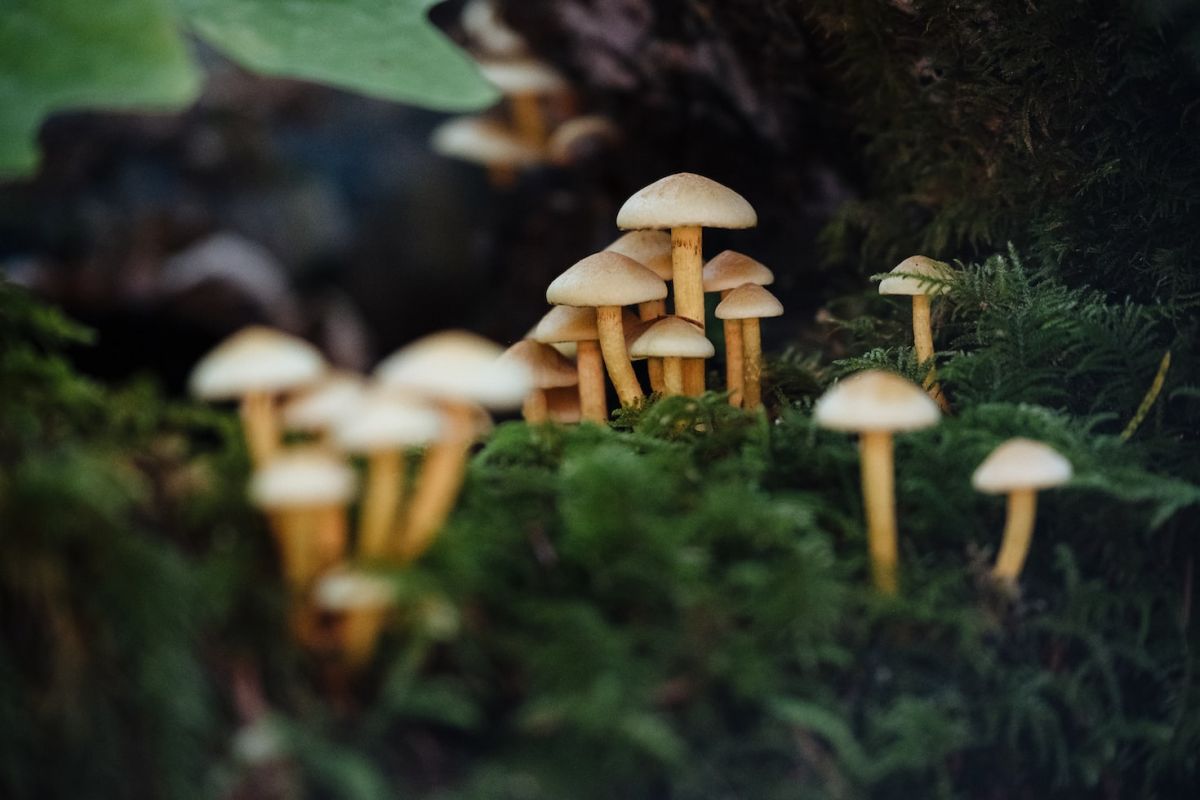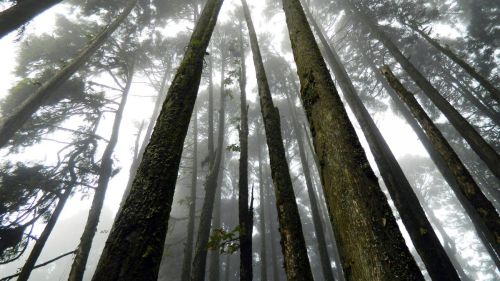Fungi are found worldwide and grow in a wide range of habitats. They can be found in extreme environments such as deserts or areas with high concentrations of salt or ionizing radiation, as well as in deep-sea sediments.
Some can survive intense UV and cosmic radiation. Most fungi live in terrestrial environments, although there are and those that partially or exclusively live in aquatic systems.
The use of fungi by humans dates back to prehistory. Ancient peoples used mushrooms as a food source, often unwittingly, for millennia preparing sourdough bread and fermented drinks. They were also used as kindling or for medicinal purposes. They are still used by man across a very wide spectrum.
They are found in all climatic zones, mainly on land, but also in waters, both salty and fresh.
The actual number of fungal species is very large. It is supposed that there are about 1-1.5 million species of them - four times more than seed plants.
By 2020, about 148 thousand species have been described, but about 2 thousand new ones are described every year - about 90% of the fungi still remain unknown.
Their limited ability to move, growth type, and morphological dissimilarity from animals have been suggested. In the colloquial consciousness, this is the case to this day, when, for example, when compiling simplified lists of protected species, fungi are combined with plants. Also in the educational program, mycology is sometimes included in botany, and the general fungi inhabiting the given environment is called flora or mycobiota.
The separation of fungi from plants was first proposed in 1969 by American botanist and climatologist, Robert Whittaker.
This is established on the basis of phyologenesis (origin), biochemistry and anatomy. Fungi are recognized as one of the developmental lines within the Opisthokont supergroup, one of six into which nuclear (eukaryotes) have been divided, which includes animals, among others.
Like animals, fungi are heterotrophic and feed on organic nutrients in their habitat, which they usually break down by releasing enzymes, making them soluble and accessible to them.
A common feature of fungi and animals is the production of polysaccharide glycogen as a storage substance, while plants produce starch.
Although fungi, like plants do not move, in the animal world there are individuals who spend most of their lives in place, such as sponges or hard corals.
Fungi do not carry out photosynthesis, the cell walls of most fungi contain chitin, which is not found in plants, while it is characteristic for the exoskeleton of arthropods. Mushrooms don't make cellulose either.
Each part of the fungal organism is self-sufficient and there is no communication between them.
The hyphae branch, merge, which leads to the formation of mycelium, which is an interconnected network of hyphae. Many species of fungi develop specialized hyphae structures to take nutrients from living hosts.
Mycelium can form more complex structures that perform specialized functions, e.g. rootstocks, mycelium cords, sclerotia, fruiting bodies.
Fungi do not show differentiation into tissues and organs.
Myceliums grown on solid substrates are referred to as colonies. Some individual colonies can reach unusual sizes and ages, as in the case of Armillaria solidipes (a fungus pathogenic to trees), which extends over an area of more than 900 ha, with an estimated age of nearly 9000 years.
In some species, the pigment melanin may play a role in extracting energy from ionizing radiation such as gamma radiation.
It is estimated that a third of all fungi reproduce using more than one method of reproduction. Most of them can reproduce both sexually and asexually. For some species, asexual reproduction is unknown at all.
The asexually reproducing form of the fungus is called anamorphs, and the sexually reproducing form - teleomorphs. There are several ways of asexual reproduction (including thalleus fragmentation, budding, spores) and several sexual reproduction (spermatization, autogamy, parthenogamy, somatogamy, gametogamy).
Many species for their lives require a small amount of them. They can be saprophytes feeding on dead organic matter, or parasites developing at the expense of other, living organisms.
A distinctive feature of fungi is the cell walls built of chitin. The fungus cell can be mononuclear, two-nuclear, or multinuclear - a multinuclear cell is called multinucleate.
Fungi can breathe aerobically or anaerobically (yeast). Anaerobic respiration is called fermentation. As a result, ethyl alcohol and CO2 are produced.
A less official classification groups fungi due to:
As the only organisms have the ability to break down lignin and are of great importance in the breakdown of cellulose, thanks to the specific enzyme - cellulase.
Fungi can be a source of both inorganic matter, which are products of metabolism (CO2, H2O), and organic matter, as they are food for many microbes. Thanks to fungi, the decomposition of branches and leaves occurs - it is estimated that without their activity, 12 tonnes of cellulosic waste per hectare would be created in tropical forests annually.
With many plants, they form mycorrhiza (symbiotic association of roots or seeds of vascular plants with fungi) - it is estimated that the proper development of about 90% of plants depends on mycorrhizal fungi.
Many species of fungi are used in food production: bread, spirits, cheeses. Some of them, like Penicillium and Aspergillus contribute to its decay.
They are also used for the production of medicines, especially antibiotics (96 antibiotics of fungal origin were already known in the mid-20th century), organic compounds (citric acid) and enzymes on an industrial scale.
Edible mushrooms are used for culinary purposes. For centuries, attempts have been made to introduce mushroom cultivation for industrial purposes. This has been successful only in 12 species. The main source of mushrooms is still wild mushrooms.
An example of such a mushroom is the oyster mushroom. When it lacks protein, it hunts nematodes by forming mycelial hyphae loops with which it captures them. After catching the nematode, it secretes enzymes that break them down and then absorbs the missing nitrogen.
Fungi of the genus Cordyceps are parasitic fungi, living on animals - on insect larvae or spiders - using them as a source of protein. Ophiocordyceps unilateralis produces a substance that crosses the blood-brain barrier and paralyzes the nervous system of ants. These insects become free - zombie ants - are completely controlled by fungi.
This communication involves the multidirectional flow of information (in the form of chemical compounds and cellular structures) between fungal hyphae and other plants and trees.
Each mycelium has its own communication code.
The species is called Pestalotiopsis microspora. Its ability to degrade polyurethane was discovered only in 2010. It is the first fungal species that can survive on polyurethane under anaerobic conditions.
This makes this fungus a potential candidate for bioremediation projects (biological soil treatment) involving large amounts of plastic.
Its image is featured on the back of a New Zealand 50-dollar note from 2002.
The fungus is inedible, but unfailingly decorative.




